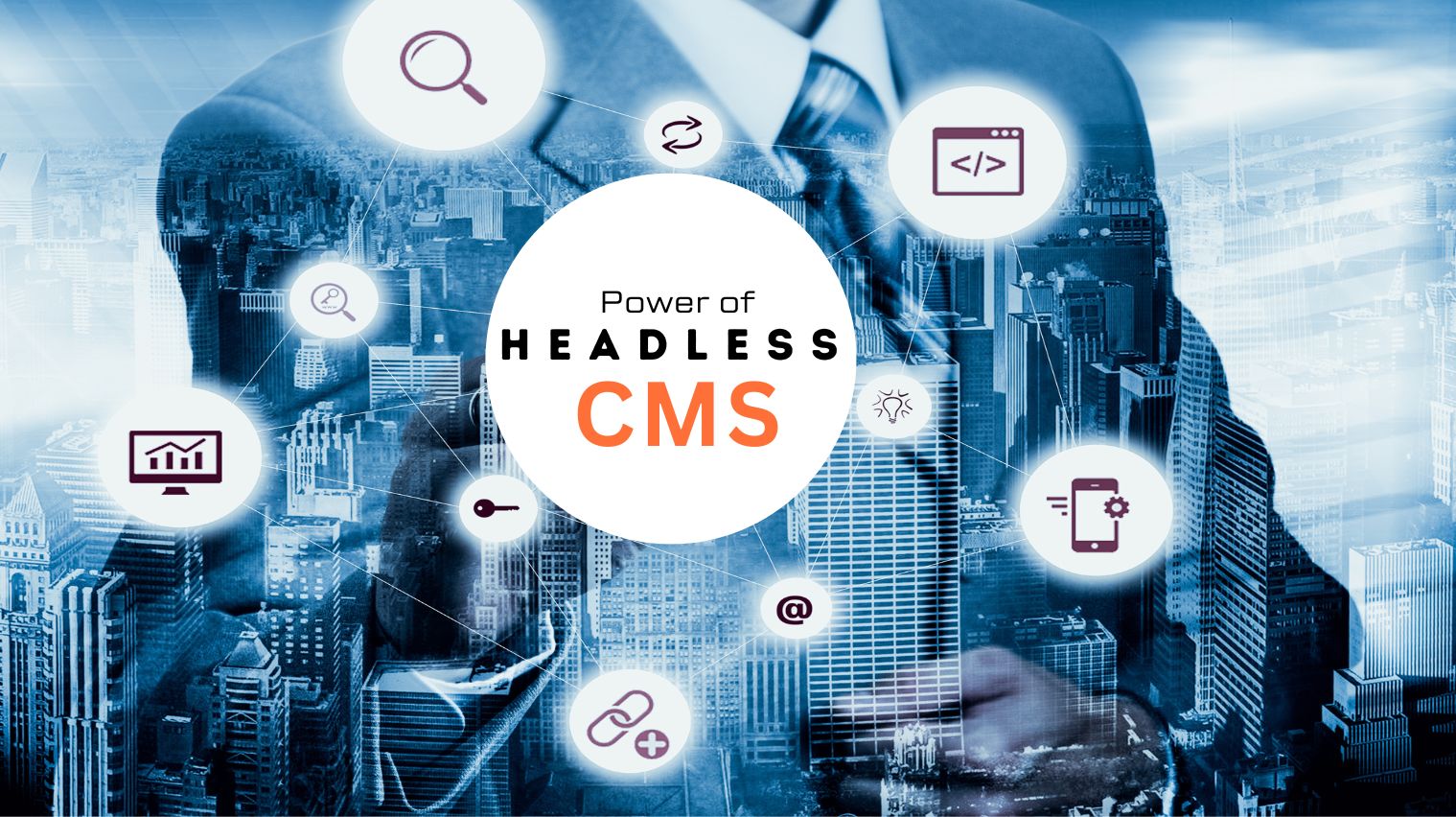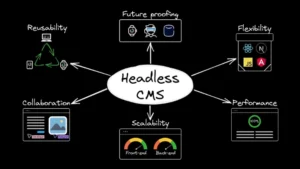Web development has rapidly evolved over the past few years, and one of the driving forces behind this change is the rise of headless CMS (Content Management System). This modern approach is reshaping how websites, apps, and digital experiences are built, offering developers more flexibility and efficiency. In this blog, we’ll explore what a headless CMS is, how it differs from traditional CMS, and how it is transforming web development.
What is a Headless CMS?
A headless CMS is a content management system that focuses on managing content without being tied to how it’s presented to the user. Unlike traditional CMS platforms, which handle both content creation and display, a headless CMS only manages the backend. It allows developers to pull content through an API (like REST or GraphQL) and use it across multiple platforms, from websites to mobile apps.
The term “headless” refers to the separation of the backend (content management) from the frontend (content presentation). This gives developers the freedom to build custom frontends using any technology they prefer, such as React, Angular, or static site generators like Gatsby.
How Does a Headless CMS Work?
A headless CMS works by enabling content creators to manage and organize content in an easy-to-use interface, while developers access the content via an API. Here’s how it works:
- Content Creation: Content creators can use a web interface to create and organize content, including blog posts, images, and videos.
- Content Management: The system stores content in a structured environment, making it easy to access and manage. Content is categorized and tagged for easy searching.
- Content Delivery via API: The content is delivered via an API in a flexible format (like JSON or XML). Developers use this API to pull content into any application or website.
- Front-End Development: Developers can build custom front-end experiences using frameworks like React, Vue, or Angular, providing complete control over the look and feel of the site or app.
Headless CMS vs Traditional CMS: Key Differences
Understanding how a headless CMS works requires comparing it to a traditional CMS:
1. Content Delivery
- Traditional CMS: Handles both content creation and delivery. It ties content to a specific frontend, limiting customization.
- Headless CMS: Manages content and delivers it via API to multiple platforms, allowing complete flexibility in how the content is displayed.
2. Flexibility
- Traditional CMS: Limited flexibility due to the tightly integrated frontend. Changes to the display often require modifying themes or templates.
- Headless CMS: Offers full flexibility, enabling developers to choose any technology or framework for the frontend, without restrictions.
3. Technology Stack
- Traditional CMS: Uses a specific tech stack (e.g., PHP, MySQL, WordPress templates), which can limit innovation.
- Headless CMS: Decouples the backend and frontend, allowing developers to use modern technologies like JavaScript frameworks or static site generators.
4. Customization
- Traditional CMS: Customizing the frontend can be challenging, often requiring modifications to pre-built themes or templates.
- Headless CMS: Front-end developers have complete control over the user interface, allowing for highly customized experiences.
How a Headless CMS Transforms Web Development
Now that we’ve covered the basics, let’s dive into how a headless CMS is transforming web development:
1. Omnichannel Content Delivery
In the past, developers focused on delivering content to websites. But with the rise of mobile apps, voice assistants, and smart devices, content needs to be accessible across multiple platforms. A headless CMS enables this by delivering content via APIs to any device or platform. Whether it’s a website, mobile app, or smart speaker, developers can deliver consistent content everywhere.
2. Faster Development and Deployment
A headless CMS allows front-end developers to build custom applications without worrying about backend limitations. This freedom leads to faster development and more efficient workflows. Additionally, because the backend and frontend are decoupled, developers can deploy updates without disrupting the user-facing components.
3. Better Performance and Scalability
Headless CMSs allow developers to choose the best technologies for their needs, resulting in faster, more efficient websites and apps. For instance, static site generators like Gatsby can be paired with a headless CMS for extremely fast page load times. Moreover, headless CMSs are designed to scale easily, as content is delivered via APIs, making it simple to handle more users or platforms as needed.
4. Enhanced Security
By separating the frontend and backend, a headless CMS can offer better security. Traditional CMSs often expose both layers, making them vulnerable to attacks. With a headless CMS, the API layer is secured independently, reducing the risk of attacks. Updates to the frontend don’t impact the backend, leading to a more secure environment.
5. Content Consistency and Personalization
A headless CMS allows brands to manage content in one place and distribute it across multiple channels. This ensures consistent messaging across websites, apps, and other digital touchpoints. Additionally, by integrating with customer data and analytics tools, content can be personalized for different audiences, leading to a more engaging user experience.
Popular Headless CMS Platforms
Several headless CMS platforms are gaining traction among developers for their flexibility and ease of use. Here are some notable ones:
- Strapi: An open-source, customizable headless CMS built with JavaScript. It supports both RESTful and GraphQL APIs.
- Contentful: A widely-used headless CMS that offers an intuitive interface for content creators and robust API support for developers.
- Sanity: Known for real-time collaboration, content versioning, and flexible content modeling.
- Prismic: A simple, easy-to-use headless CMS that makes managing and delivering content straightforward.
- Ghost: A headless CMS designed primarily for blogs and content-focused websites, optimized for performance.
Conclusion
A headless CMS is more than just a trend; it’s a game-changer in web development. By separating content management from presentation, it empowers developers to create custom, high-performing websites and apps. With benefits like omnichannel content delivery, faster development, better performance, and enhanced security, a headless CMS is transforming the way developers build digital experiences.
As the demand for flexible, scalable web solutions grows, the headless CMS will continue to play a pivotal role in shaping the future of web development. If you’re looking for a way to streamline your content management and deliver personalized experiences across multiple platforms, the headless CMS is the way to go.




